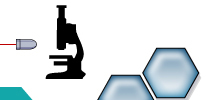Tool marks are those marks produced by an
object when it come into contact with a softer substance
and either scrapes or cuts across it or is impressed into
it. There are many examples of tool marks in our
environment. A common one is shown in the photograph on
the left where a pair of bolt cutters was used to cut a
lock shackle. The comparison micro-photograph shows the
evidence lock shackle on the left side and the test cut
produced by the bolt cutters in a piece of lead on the
right. | 




